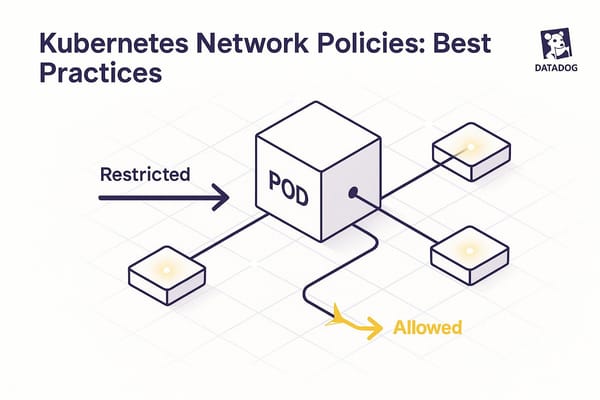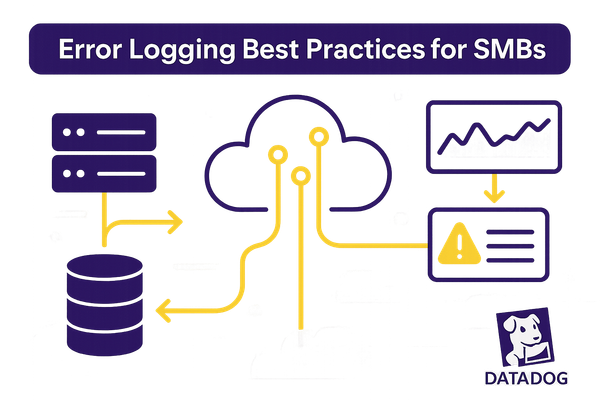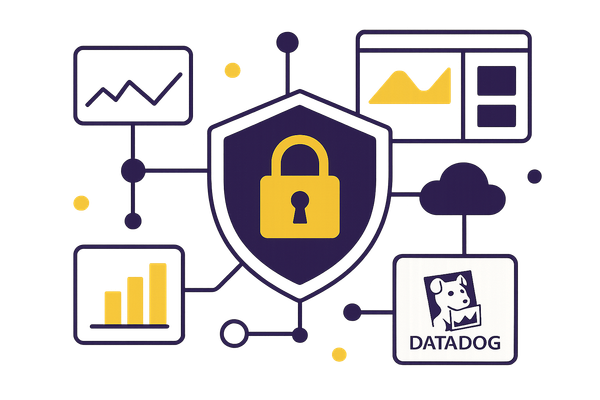Ultimate Guide to Datadog Integration Cost Management
Learn how to effectively manage Datadog costs through strategic planning, resource tracking, and ongoing optimization techniques.
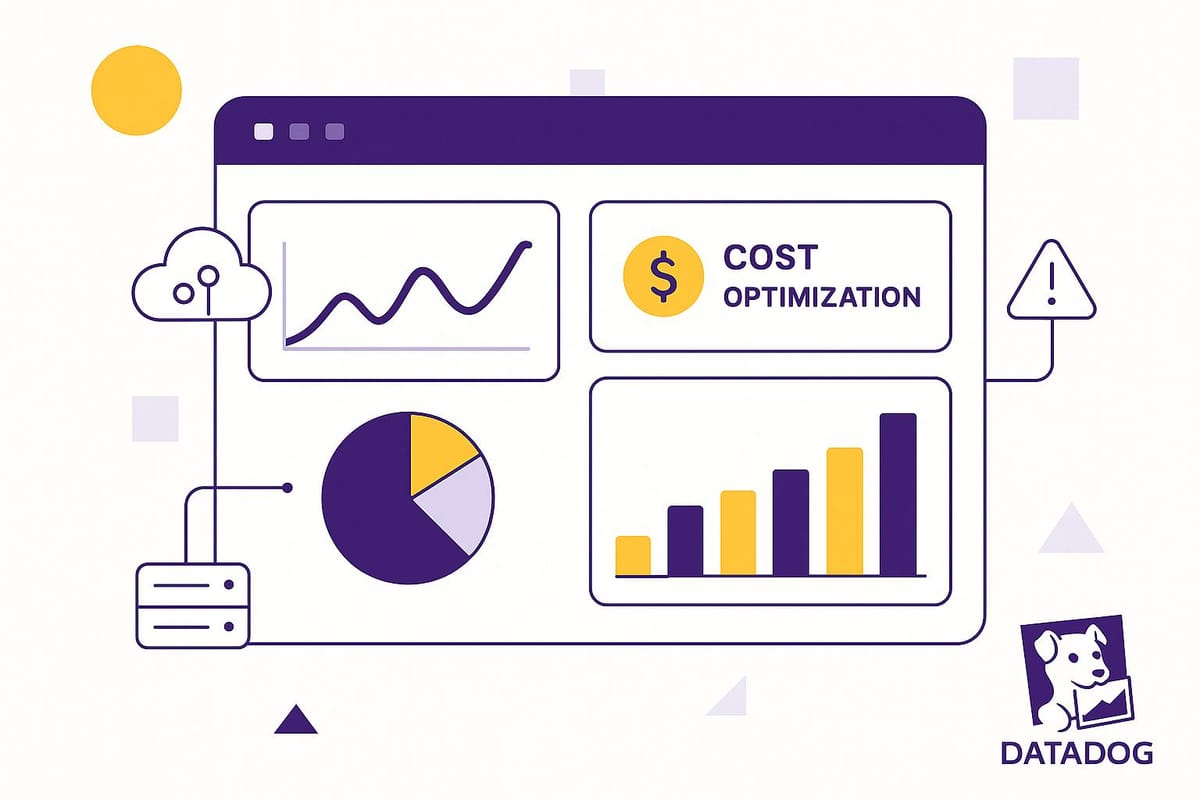
Managing Datadog costs doesn’t have to be complicated. Here’s a quick breakdown to help you control expenses and optimize your setup:
-
Understand Cost Drivers:
- Host Monitoring: Costs depend on the number of hosts and monitoring frequency.
- Log Management: Higher data volumes and longer retention periods increase expenses.
- APM (Application Performance Monitoring): Costs rise with transaction volumes and trace retention.
- Custom Metrics: More metrics and frequent reporting drive up costs.
-
Plan Setup Costs:
- Assess infrastructure needs (hosts, data volume, retention, network resources).
- Use tagging to track expenses by team, product, or environment.
- Set budget alerts at 70%, 85%, and 95% of your spending limit.
-
Avoid Common Mistakes:
- Don’t over-collect metrics or logs - focus on critical data.
- Adjust retention settings to match compliance needs.
- Fine-tune alert thresholds to prevent unnecessary notifications.
-
Manage Ongoing Costs:
- Use controls like log exclusion filters, sampling, and environment-based monitoring.
- Set up dashboards to track daily spending and detect anomalies.
- Configure budget alerts and automated responses to prevent cost spikes.
-
Reduce Costs:
- Consolidate multi-cloud spending with consistent tagging and unified dashboards.
- Forecast expenses using historical trends for better budget planning.
- Negotiate contracts based on usage volume, term commitments, or service bundling.
| Key Cost Areas | Tips to Save |
|---|---|
| Host Monitoring | Monitor only essential hosts and adjust frequency. |
| Log Management | Filter unnecessary logs and set appropriate retention periods. |
| Multi-Cloud Environments | Use consistent tags and automate cost allocation for better visibility. |
| Contract Optimization | Negotiate discounts for high usage or longer terms. |
How to Reduce Your Datadog Costs by Optimizing Metric Cardinality
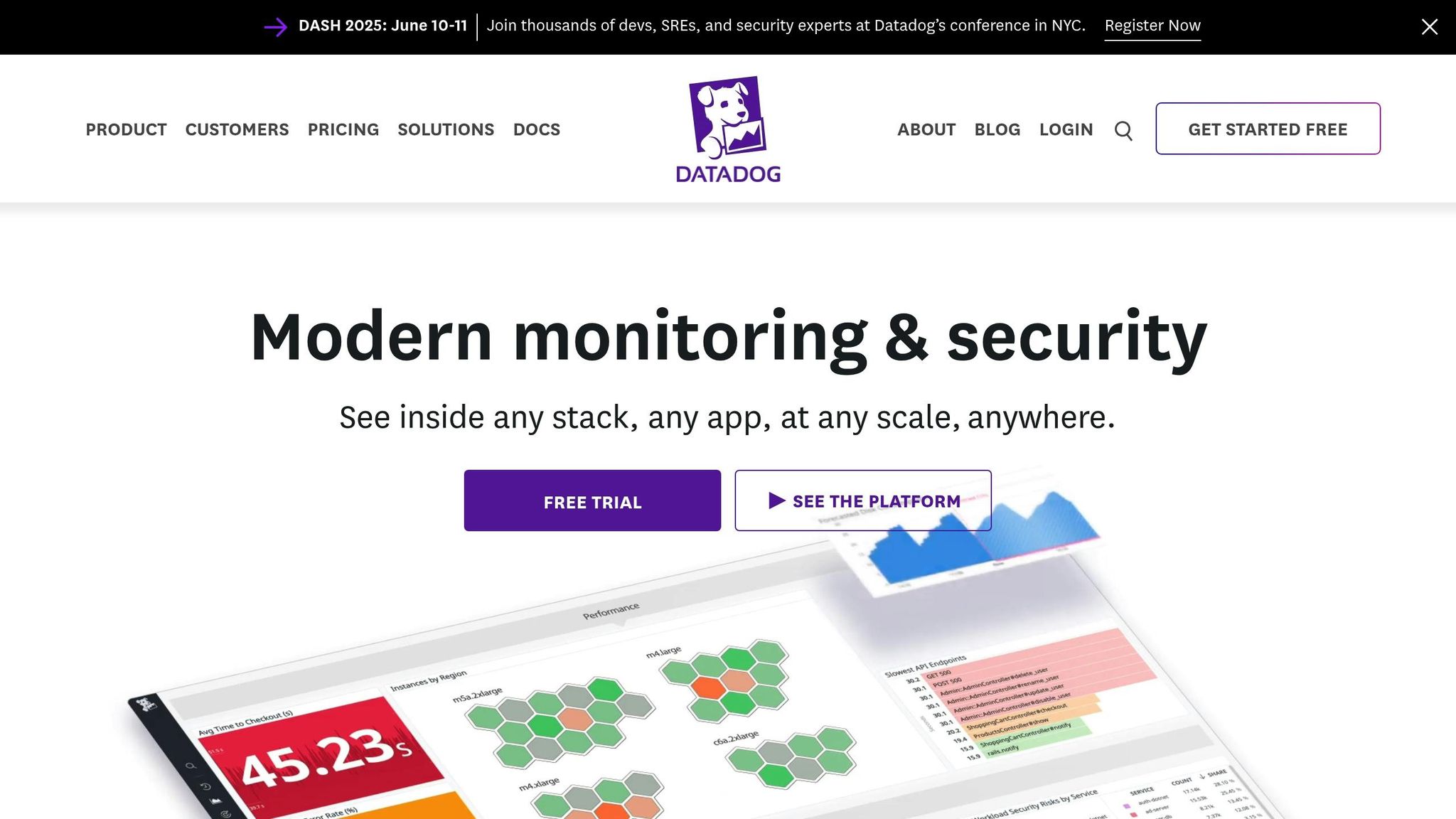
Setup Cost Planning
Careful planning of setup costs is essential to make the most of your Datadog investment. By assessing infrastructure needs, tracking expenses, and avoiding common pitfalls, SMBs can ensure a smooth and cost-effective implementation.
Infrastructure Requirements
Before rolling out Datadog, take stock of your current environment to understand what resources you'll need:
| Component | Considerations |
|---|---|
| Host Monitoring | Number of servers, containers, and serverless functions |
| Data Volume | Expected logs, metrics, and traces per day |
| Retention Needs | Length of time required for storing different types of data |
| Network Resources | Bandwidth needed for transmitting data to Datadog |
| Supporting Infrastructure | Proxy servers or dedicated monitoring instances required |
Start by focusing on business-critical systems to test capacity without over-provisioning. To keep costs in check, set budget alerts at 70%, 85%, and 95% of your allocated spending limits.
Once your infrastructure needs are clear, implement a unified tagging system to precisely track costs across all resources.
Cost Tracking with Tags
A consistent tagging strategy is key to understanding and managing your expenses. Design a taxonomy that includes the following dimensions:
- Business Dimensions: Tags for team, department, and product.
- Technical Context: Tags for environment and region.
- Cost Attribution: Tags for cost centers.
Automate the tagging process during resource creation to ensure comprehensive coverage. With this strategy in place, take advantage of Datadog's Cloud Cost Management tools to create customized expense breakdowns. Additionally, configure automated daily cost reports for stakeholders to maintain transparency and accountability.
Setup Mistakes to Avoid
Avoiding common setup errors can save significant costs over time. Here are three major pitfalls to watch for:
-
Over-Instrumentation
Collecting too many metrics or logs without proper filtering can drive up costs quickly. Focus on critical data points and use strategic sampling to avoid unnecessary expenses. -
Inappropriate Retention Settings
Default retention periods may not align with your business needs. Regularly review compliance requirements and adjust retention settings to minimize storage costs. -
Ineffective Alert Configuration
Setting overly sensitive alert thresholds can lead to unnecessary notifications, consuming resources and increasing costs. Fine-tune your alert conditions and routing to prevent alert fatigue.
To address these challenges, leverage Datadog's cost controls and quotas from the start. Begin with a phased rollout, starting with essential systems and gradually expanding while monitoring expenses closely. Regular reviews of your configuration can help identify inefficiencies and ensure your setup remains cost-effective.
Up next, we’ll explore strategies to manage ongoing costs efficiently.
Ongoing Cost Management
Once your Datadog setup is in place, keeping costs under control requires continuous effort. Regular oversight ensures that resources are used wisely, performance stays optimized, and expenses remain manageable.
Resource Usage Controls
The first step in managing costs is understanding what you need to monitor. Tailoring your Datadog environment can help you avoid unnecessary expenses while maintaining efficiency. Here are some strategies to manage resource usage effectively:
| Control Type | Implementation Strategy | Cost Impact |
|---|---|---|
| Monitor Scheduling | Schedule non-critical monitors during business hours | Reduces off-hours costs |
| Data Sampling | Use sampling for high-volume metrics | Cuts down data ingestion costs |
| Log Management | Apply log exclusion filters and retention policies | Lowers storage expenses |
| Environment-Based | Adjust monitoring intensity by environment (e.g., production vs. staging) | Optimizes resource allocation |
When putting these controls in place, start with systems that are critical to your business. For example, you can use automated scripts to enforce log sampling and retention policies, ensuring you don't accumulate unnecessary data that could inflate costs. Once these controls are active, track their effectiveness using dedicated dashboards.
Cost Tracking Dashboards
Dashboards are vital for keeping an eye on spending. Set up dashboards to display metrics like daily and monthly expenses, data ingestion rates, monitor usage, and cost breakdowns by team or service. Highlighting these key metrics gives you real-time insights into spending patterns and makes it easier to hold teams accountable. With these tools, you can spot unusual trends quickly and take action before costs spiral out of control.
Cost Spike Prevention
Avoiding unexpected cost increases means staying proactive. Here are three strategies to help you prevent sudden spikes:
- Anomaly Detection: Use automated tools to flag unusual resource usage or sudden cost jumps.
- Budget Alerts: Set alerts to notify you when spending approaches defined thresholds.
- Automated Response: Combine anomaly detection with automated alerts to ensure quick resolutions when issues arise.
Cost Reduction Methods
Reducing Datadog costs in complex environments requires a thoughtful approach that combines data-driven insights with strategic management. Here's how you can implement methods to achieve measurable savings.
Multi-Cloud Cost Management
Managing Datadog expenses across multiple cloud platforms starts with a unified strategy. By consolidating spending data, you can gain clearer insights and better control over costs.
| Cost Management Area | Implementation Strategy | Expected Outcome |
|---|---|---|
| Tagging | Use consistent tags across all cloud platforms | Easier cost attribution by team or service |
| Usage Monitoring | Set up unified dashboards for monitoring | Real-time visibility across platforms |
| Allocation | Automate cost distribution rules | More accurate departmental billing |
For instance:
"A mid-sized SaaS company integrated Datadog with Finout to streamline cost tracking across AWS and Azure. By tagging resources consistently and analyzing usage, they spotted redundant monitoring on non-critical services. This enabled them to renegotiate their Datadog contract based on consolidated usage, cutting monthly monitoring costs by 20%."
These practices lay the groundwork for proactive management, leading into the next step: cost forecasting.
Cost Forecasting
Accurately predicting costs is essential for staying within budget. Track key metrics like monthly active hosts, log ingestion volumes, custom metrics, and alert frequencies. Specialized forecasting tools can analyze historical usage trends, helping you estimate future expenses and plan budgets more effectively. This approach not only prevents surprise costs but also ensures smoother financial management.
Contract Optimization
Once you have accurate forecasts, you can further reduce costs by optimizing your Datadog contracts. Here are some proven strategies to secure better pricing:
- Volume-Based Negotiations: Analyze your usage over the past 6–12 months. Use this data to negotiate discounts based on consistent or high-volume usage.
- Term Commitments: Committing to longer contract terms, such as annual or multi-year agreements, often unlocks significant discounts. Compare potential savings against your forecasted needs.
- Service Bundling: Review the Datadog services used across your teams. Consolidating services under a single contract can qualify you for better pricing tiers.
Before entering contract negotiations, arm yourself with detailed usage reports, growth projections, and a clear understanding of service dependencies. This preparation ensures you’re in a stronger position to secure favorable terms.
Cost Management Summary
Managing Datadog costs effectively hinges on three core practices: proactive monitoring, data-backed decisions, and regular optimization. Here's a quick breakdown:
| Cost Management Pillar | Key Actions |
|---|---|
| Proactive Monitoring | Apply consistent tagging and set usage alerts to manage resource consumption effectively. |
| Data-Driven Decisions | Evaluate resource usage and forecast expenses to guide smarter choices. |
| Continuous Optimization | Frequently review contracts and consolidate services to keep costs in check. |
To put these strategies into action, consider these steps:
- Audit Your Infrastructure: Begin with a detailed review of your monitoring needs, prioritizing metrics that directly influence your operations.
- Tag Strategically: Use consistent and clear tagging to track costs accurately and identify areas for improvement.
- Control Usage: Set automated alerts to catch unusual spikes in log ingestion, metric collection, or API calls before they inflate costs.
- Conduct Regular Reviews: Analyze usage patterns regularly and tweak your monitoring setup to align with current demands.
FAQs
How can I use tagging to monitor and control Datadog costs for different teams and environments?
Tagging in Datadog offers a smart way to track and manage costs across different teams, projects, and environments. By adding tags like team:engineering or env:production to your resources, you can easily break down usage and spending based on specific groups or purposes.
To make the most of it, start by creating a clear and consistent tagging strategy that matches your organization's structure. Stick to uniform naming conventions and apply tags to all monitored resources. This approach helps you create detailed reports, pinpoint cost drivers, and optimize resource usage. It’s also a good idea to periodically review your tags to ensure they stay relevant and reflect any changes in your organization.
What are some common mistakes to avoid when setting up Datadog to keep costs under control?
To keep your Datadog setup cost-effective, steer clear of these common mistakes:
- Monitoring too much too soon: Focus on tracking only the most essential systems and services at the start. Adding excessive integrations or metrics right away can drive up expenses unnecessarily.
- Messy or excessive tagging: Disorganized or overly complex tagging can make data filtering and analysis a hassle, wasting resources and inflating costs.
- Overlooking usage limits: Keep a close eye on your subscription plan's caps for metrics, logs, and traces. Going over these limits can lead to unexpected charges.
By starting small, staying organized, and keeping tabs on usage, you can control costs while getting the most out of Datadog for your business.
How can my organization negotiate better Datadog contracts based on usage and future requirements?
To secure better terms with Datadog, start by diving into your organization's usage data. Take a close look at which features or services you rely on most and how they're being used. This will help you pinpoint areas where you're getting the best return on investment and identify opportunities to cut costs.
When it's time to negotiate, come prepared with insights about your future needs and growth projections. Explaining how your usage might expand over time can open the door to discussions about volume discounts or custom pricing options. You may also want to connect with Datadog's sales team to explore flexible pricing models or bundled packages that align with your business's unique needs.
A well-informed approach, combined with a collaborative attitude, can often lead to more budget-friendly terms that still support your long-term objectives.

